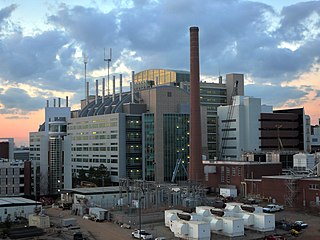
Druid Hills is a community which includes both a census-designated place (CDP) in unincorporated DeKalb County, Georgia, United States, as well as a neighborhood of the city of Atlanta. The CDP's population was 14,568 at the 2010 census. The CDP formerly contained the main campus of Emory University and the Centers for Disease Control and Prevention (CDC); however, they were annexed by Atlanta in 2018. The Atlanta-city section of Druid Hills is one of Atlanta's most affluent neighborhoods with a mean household income in excess of $238,500.
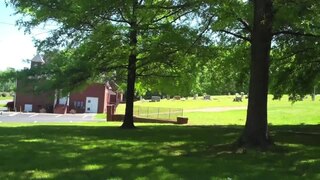
The Rosenwald School project built more than 5,000 schools, shops, and teacher homes in the United States primarily for the education of African-American children in the South during the early 20th century. The project was the product of the partnership of Julius Rosenwald, a Jewish-American clothier who became part-owner and president of Sears, Roebuck and Company and the African-American leader, educator, and philanthropist Booker T. Washington, who was president of the Tuskegee Institute.

Durham's Chapel School, also known as Durham's Chapel Rosenwald School, is a former school for African-American children located in Gallatin, Tennessee, that is listed on the National Register of Historic Places.
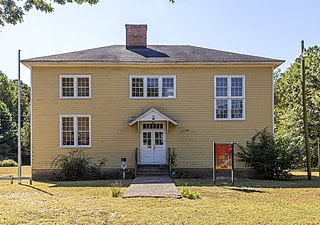
San Domingo School, also known as Sharptown Colored School and Prince Hall Masons Unity Lodge No. 73, is a historic Rosenwald School building located at Sharptown, Wicomico County, Maryland. It was built in 1919, and is a two-story, rectangular frame building with a hipped roof. It is one of four surviving Rosenwald schools in Wicomico County. The school had only four teachers and remained in use as a school until 1957.

Liberty Colored High School is a former high school for African-American students in Liberty, South Carolina during the period of racial segregation. It originally was called Liberty Colored Junior High School. The building is now a community center known as the Rosewood Center. It is at East Main Street and Rosewood Street in Liberty. The school was built in 1937 on the site of a Rosenwald school that had burned down.
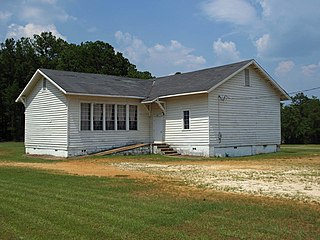
The Mount Sinai School is a historic Rosenwald School in rural Autauga County, Alabama, US, northwest of Prattville. The one-story frame building was built in 1919 to the designs of W.A. Hazel to serve the local African American community. The money to build it was provided by the Julius Rosenwald Fund. The school was added to the Alabama Register of Landmarks and Heritage on February 2, 2001. It was subsequently listed on the National Register of Historic Places on November 29, 2001, as a part of The Rosenwald School Building Fund and Associated Buildings Multiple Property Submission.

The Tankersley Rosenwald School, also known as the Tankersley Elementary School, is a historic American Craftsman-style school building in Hope Hull, Alabama, a suburb of Montgomery. This Rosenwald School building was built in 1922 to serve the local African American community. The money to build the school was provided, in part, by the Julius Rosenwald Fund. It was added to the Alabama Register of Landmarks and Heritage on June 26, 2003, and to the National Register of Historic Places as a part of The Rosenwald School Building Fund and Associated Buildings Multiple Property Submission on January 22, 2009.
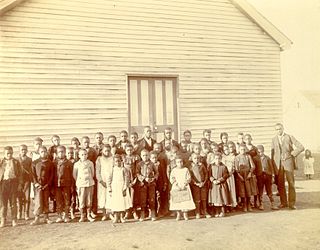
Cadentown School in Lexington, Kentucky was a primary public school for black children in the segregated Fayette County Public Schools from about 1879 to 1922. The building that originally housed Cadentown School, located at 705 Caden Lane, is no longer extant. However, the Rosenwald Fund School is listed on the National Register of Historic Places in Fayette County.

Lincoln School, also known as the Lincoln Consolidated Rosenwald School, is a former African-American school in Pikeville, Tennessee, that is listed on the National Register of Historic Places.

The Chicot County Training School was a historic school building at the corner of Hazel and North School Streets in Dermott, Arkansas. The single story H-shaped building was built in 1929 with funding support from the Rosenwald Fund, a major philanthropic effort to improve educational opportunities for African-Americans. The school was preceded by Dermott Baptist Industrial School, co-founded by Isaac George Bailey, and then Morris Booker High School and Memorial College. It was succeeded by Morris Booker Memorial College. The building was listed on the National Register of Historic Places in 2004. The school building collapsed and burned after being abandoned. It was delisted from the National Register in 2022.

Mt. Zion Rosenwald School, also known as Mt. Zion-Rosenwald Colored School, is a historic Rosenwald School building located near Florence, Florence County, South Carolina. It was built in 1925, and is a rectangular frame building with tall exterior windows. It is a "two or three teacher" school building. Construction of the project was funded in part by the Julius Rosenwald Fund, which helped build more than 5,300 black school buildings across the south from 1917 to 1932.

Pine Grove Rosenwald School, also known as Pine Grove Colored School, is a historic Rosenwald school building located at St. Andrews, Richland County, South Carolina. It was built in 1923, and is a one-story, rectangular gable-front frame building. Its layout is a variant of the two-room schoolhouse and features large banks of tall narrow windows.

The Catawba Rosenwald School is a historic school building at 3071 South Anderson Road United States Route 21) in Catawba, South Carolina. It is a single-story wood-frame structure, built in 1924–25 with support from the Rosenwald Fund, to one of the fund's architectural plans. It served as a school for the area's African-American population from then until its closure in 1956. In 1960 the vacant building was moved within the same property to accommodate the widening of South Anderson Road. It is one of two surviving Rosenwald schools in York County. It is owned by the Rock Hill School District.

The Oak Grove Rosenwald School is a historic school building on Oak Grove Road in Oak Grove, a small settlement in southeastern Sevier County, Arkansas. It is a single-story wood-frame structure, built in 1926 with financial assistance from the Rosenwald Fund. It has two classrooms, and is based on a standard plan developed by Samuel Smith, an agent for the Rosenwald Fund, for this type of small community school. It was probably used for the education of local African Americans until the state's schools were integrated, and is the only surviving Rosenwald school in the county.

Reid's Grove School is a historic Rosenwald school located near Gatesville, Gates County, North Carolina. It was built in 1927, and is a one-story, side-gable frame school with a prominent projecting single-bay gabled wing. It was one of seven schools in the county financed and constructed with the assistance of the Rosenwald Fund for the education of African-American children. It replaced an earlier school built in the 1880s. The building ceased its function as a school in 1951.

The Gifford Rosenwald School is a historic school building at 6146 Columbia Highway in Gifford, South Carolina. It was built in 1920 with funding from the Rosenwald Fund for the education of African Americans. Its design is not based on standard Rosenwald plans, but on a standard two-room plan published by state Board of Education. Originally segregated to African Americans it was integrated in 1958.

The Thomas Jefferson Elder High and Industrial School, at 316 Hall St. in Sandersville, Georgia, was listed on the National Register of Historic Places in 1981. It is a Rosenwald school built in 1927. It competed in the Georgia Interscholastic Association.

Eleanor Roosevelt School, also known as the Eleanor Roosevelt Vocational School for Colored Youth, Warm Springs Negro School, and the Eleanor Roosevelt Rosenwald School, which operated as a school from March 18, 1937 until 1972, was a historical Black community school located at 350 Parham Street at Leverette Hill Road in Warm Springs, Georgia. As of May 3, 2010, the school is listed on the National Register of Historic Places listings in Meriwether County, Georgia.

The Union Station School is a historic building and former segregated public school for African-American students from 1928 until 1966, located in Paducah, Kentucky. It has been listed on the National Register of Historic Places since August 19, 2011 for ethnic heritage.























